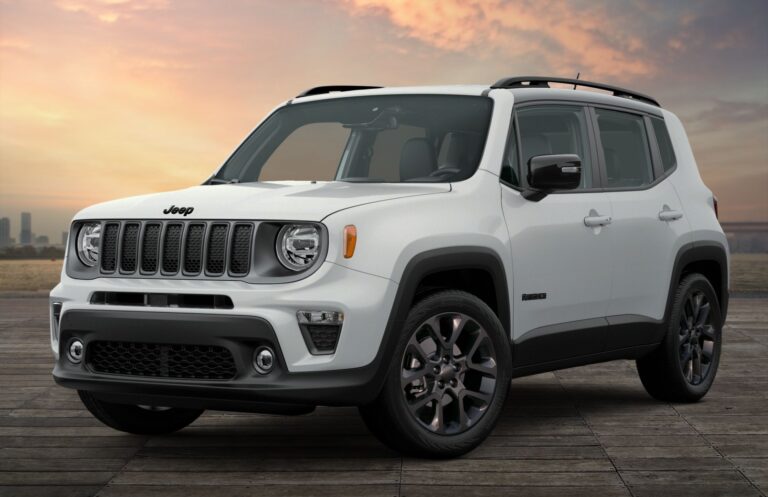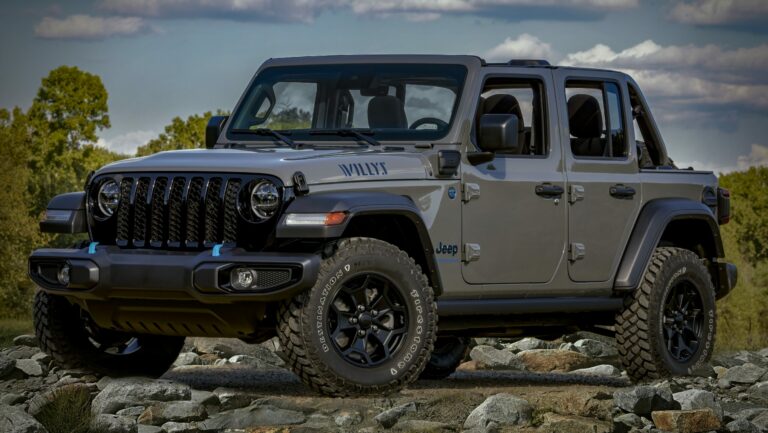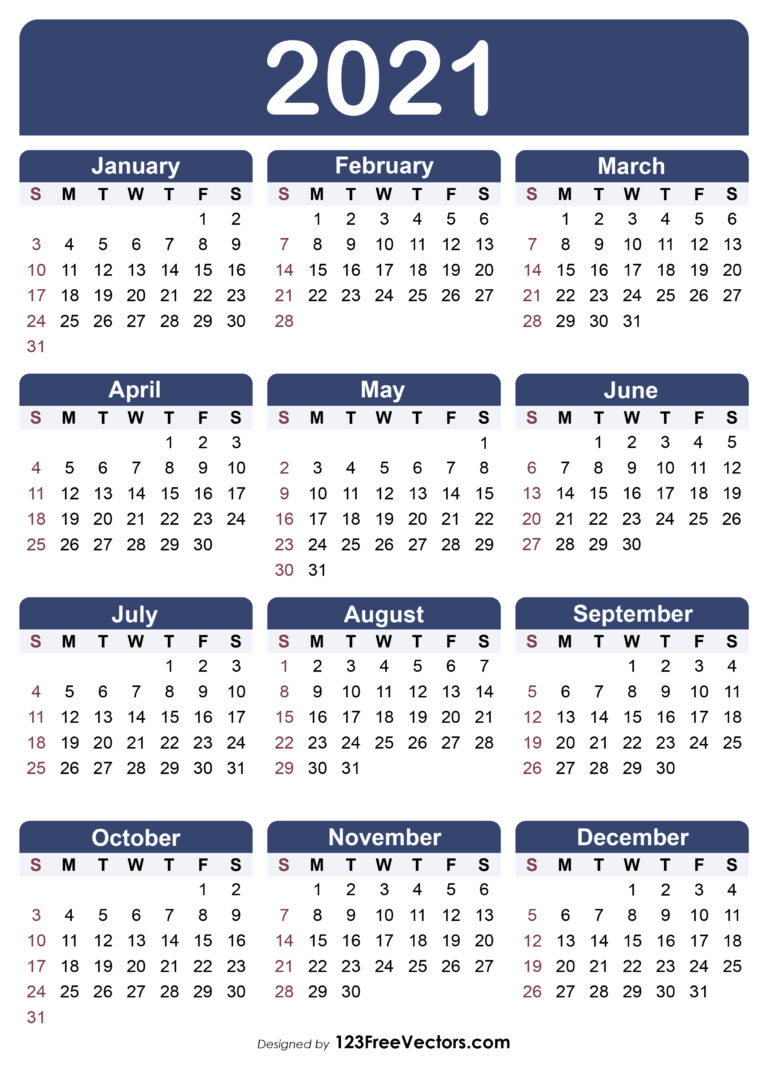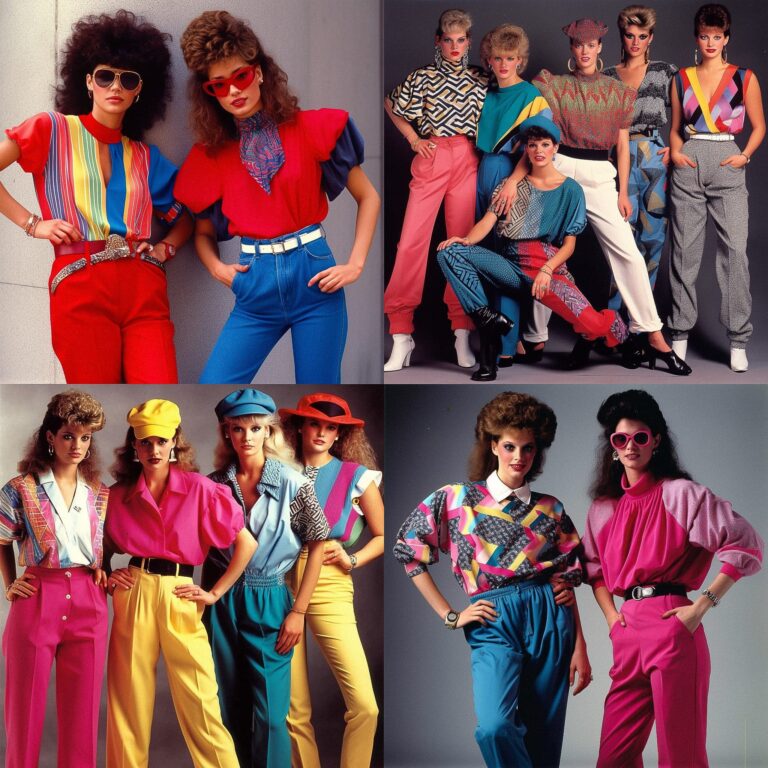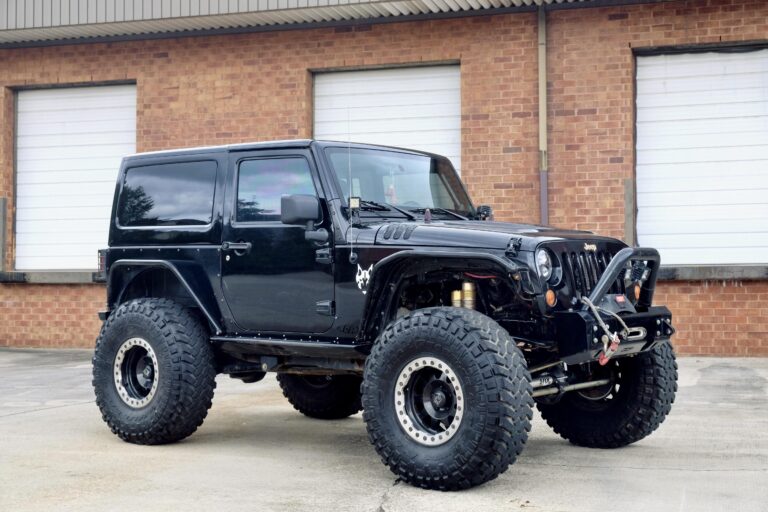Old Jeep CJ For Sale: A Comprehensive Buyer’s Guide
Old Jeep CJ For Sale: A Comprehensive Buyer’s Guide jeeps.truckstrend.com
The Enduring Allure of the Classic Jeep CJ
For generations, the name "Jeep" has been synonymous with rugged capability, adventure, and an undeniable spirit of freedom. Among its legendary lineage, the CJ (Civilian Jeep) series stands as the purest embodiment of this heritage. Born from the battle-tested Willys MB of World War II, the CJ evolved from a utilitarian workhorse into an iconic recreational vehicle, capturing the hearts of off-road enthusiasts and classic car collectors alike.
Old Jeep CJ For Sale: A Comprehensive Buyer’s Guide
Today, the quest for an "Old Jeep CJ For Sale" isn’t just about acquiring a vehicle; it’s about owning a piece of automotive history, a testament to simplicity and uncompromising functionality. Whether you dream of tackling challenging trails, cruising with the top down on a sunny day, or restoring a classic to its former glory, the allure of the CJ remains potent. This comprehensive guide will navigate the exciting, yet sometimes challenging, world of buying an old Jeep CJ, providing you with the knowledge and practical advice to make an informed decision.
Understanding the Legacy: A Brief History of the Jeep CJ Series
The story of the Civilian Jeep begins in the immediate aftermath of World War II, when Willys-Overland saw a civilian market for their robust military vehicle.
-
CJ-2A (1945-1949): The "Agri-Jeep"
The first true civilian Jeep, often called the "Universal Jeep." It retained much of the military MB’s DNA but introduced features like a tailgate, seven-slot grille, and a power take-off (PTO) for agricultural use. These are flat-fendered and highly sought after by purists.
-
CJ-3A (1949-1953): Refinements and Comfort
Similar to the CJ-2A, but with minor updates including a one-piece windshield that could be folded flat. It continued the utilitarian focus. -
CJ-3B (1953-1968): The "High Hood"
Introduced to accommodate the taller F-head "Hurricane" engine, the CJ-3B featured a distinctive taller hood and grille. This model maintained its compact size but offered more power. -
CJ-5 (1955-1983): The Longest Reign
The CJ-5, based on the military M38A1, became an icon. Its rounded fenders, compact wheelbase, and rugged build made it incredibly popular. Over its nearly three-decade production run, it saw numerous engine changes (Go-Devil, Hurricane, Dauntless V6, AMC inline-6, AMC V8s) and refinements, making it the most varied CJ model. -
CJ-6 (1955-1975): The Stretched Variant
Essentially a CJ-5 with a 20-inch longer wheelbase, offering more cargo space or rear passenger room. It’s rarer than the CJ-5 but shares most mechanical components. -
CJ-7 (1976-1986): The Modern Classic
The most popular and recognizable CJ, the CJ-7 introduced a slightly longer wheelbase and a wider track than the CJ-5, improving stability and comfort. It offered more creature comforts, including optional automatic transmissions and hardtops, making it a better daily driver candidate for many. Its widespread popularity also means a vast aftermarket support. -
CJ-8 Scrambler (1981-1986): The Pickup Variant
Based on the CJ-7 chassis but with an even longer wheelbase and a small pickup bed. The Scrambler is the rarest and often most valuable of the later CJs, cherished for its unique utility and classic lines.

Why Buy an Old Jeep CJ? The Benefits of Classic Ownership
The decision to purchase an old Jeep CJ goes beyond mere transportation. It’s an embrace of a lifestyle, offering a unique set of rewards:
- Nostalgia and Heritage: Owning a CJ connects you to a rich history of exploration, utility, and American ingenuity. It’s a tangible piece of the past that still performs.
- Simplicity and Maintainability: Unlike modern vehicles laden with complex electronics, CJs are mechanically straightforward. Their basic design makes them relatively easy to work on, even for amateur mechanics, reducing maintenance costs and fostering a deeper understanding of your vehicle.
- Unmatched Off-Road Prowess: The legendary 4×4 system, short wheelbases (on most models), and robust construction make CJs incredibly capable off-road vehicles, living up to their "Go Anywhere" reputation.
- Customization Potential: The aftermarket support for CJs is immense. From lift kits and larger tires to engine swaps and interior upgrades, you can tailor your CJ to your exact specifications, creating a truly unique vehicle.
- Investment Potential: Well-maintained or professionally restored CJs, particularly rarer models like the CJ-8 Scrambler or early flat-fenders, have shown consistent appreciation in value, making them not just a hobby but a potential asset.
- Strong Community: The Jeep CJ community is vibrant and passionate. Owners share knowledge, offer support, and organize events, providing a sense of belonging and camaraderie.
Navigating the Market: Where to Find Old Jeep CJs For Sale
Finding the right Old Jeep CJ requires a strategic approach. Here are the most common avenues:
-
Online Marketplaces:
- eBay Motors: Great for a wide variety, from project vehicles to fully restored examples. Use specific search terms like "Jeep CJ-7" or "Willys CJ-2A."
- Craigslist/Facebook Marketplace: Excellent for local finds, often at lower prices, but require careful vetting. Be prepared to travel for a good deal.
- Specialized Auction Sites (Bring a Trailer, Hemmings Auctions): These platforms feature higher-quality, often restored or well-preserved examples, usually fetching premium prices.
- Hemmings Motor News/Classifieds: A traditional source for classic cars, offering both online and print listings.
-
Dedicated Forums and Clubs: Online forums (e.g., JeepForum.com, CJ-8.com) and local Jeep clubs often have "For Sale" sections. This is an excellent way to find CJs from enthusiasts who know their vehicles and can provide detailed history.
-
Classic Car Dealers/Brokers: Reputable classic car dealerships often have CJs in their inventory. While prices may be higher, these vehicles are typically inspected, and some dealers offer warranties.
-
Local Ads and Word of Mouth: Don’t underestimate the power of physical classifieds, local auto repair shops, or simply letting friends and family know you’re looking. Hidden gems often surface this way.
-
Auctions (Physical): Classic car auctions can be exciting but require quick decision-making and a thorough pre-inspection if possible.
The Inspection Process: What to Look For Before You Buy
Buying an old vehicle, especially a Jeep CJ, is not like buying a new car. A thorough inspection is paramount to avoid costly surprises. Bring a flashlight, a magnet, and a friend who knows CJs if possible.
-
Frame and Body Rust: This is the absolute #1 killer of CJs.
- Frame: Inspect the entire frame, especially near body mounts, spring hangers, and behind the front and rear wheels. Look for soft spots, patch welds, or excessive scale. Tap with a hammer – a dull thud often means rust.
- Body: Check floorboards (especially under the seats and footwells), rocker panels, wheel wells, tailgate, and the area around the windshield frame. Use a magnet to detect bondo over rust.
- Common Trouble Spots: Rear frame cross member, front frame horns, areas where roll cages mount.
-
Engine Condition:
- Cold Start: Listen for excessive smoke (blue for oil, white for coolant, black for fuel), unusual noises (knocks, ticks, clunks).
- Fluid Leaks: Check under the vehicle for oil, coolant, or transmission fluid leaks.
- Oil & Coolant: Check levels and condition. Milky oil or coolant could indicate head gasket issues.
-
Transmission and Transfer Case:
- Manual: Test all gears, listen for grinding or popping out of gear. Check clutch engagement.
- Automatic: Check fluid level and condition. Test shifting through all gears, ensuring smooth engagement.
- Transfer Case (4WD): Engage 4-high and 4-low. Drive a short distance (on a loose surface if possible) to ensure engagement and no binding.
-
Axles and Differentials:
- Check for leaks around the differential covers and axle seals.
- Listen for excessive whine or clunking during the test drive, which could indicate worn gears or bearings.
-
Steering and Suspension:
- Check for excessive play in the steering wheel. Inspect tie rods, drag links, and ball joints for looseness.
- Look at leaf springs for broken leaves. Check shock absorbers for leaks.
- If lifted, inspect the quality of the lift kit installation.
-
Electrical System:
- Test all lights (headlights, taillights, turn signals, brake lights), wipers, horn, and gauges.
- Inspect wiring harnesses for signs of amateur repairs, frayed wires, or corrosion.
-
Brakes:
- Check the master cylinder for leaks.
- Inspect brake lines for rust or damage.
- Feel pedal firmness and stopping power during the test drive.
-
Documentation:
- Verify the VIN matches the title.
- Check for a clear title.
- Ask for service records or any history of modifications.
-
Test Drive:
- Drive at various speeds. Listen for unusual noises, feel for vibrations, and assess handling.
- Test the brakes in a safe area.
- Ensure all gears engage smoothly.
Models and Their Characteristics: Which CJ is Right for You?
Choosing among the various CJ models depends on your priorities:
-
CJ-2A/3A/3B (Flat-Fenders):
- Pros: Purest form of the civilian Jeep, historical significance, simpler mechanics, often appreciate well.
- Cons: Less comfortable, slower, harder to find parts for some unique components, often more expensive to restore, not ideal for highway driving.
- Best For: Collectors, purists, light trail use, parade vehicles.
-
CJ-5:
- Pros: Iconic look, very nimble off-road due to short wheelbase, wide range of engine options, abundant parts.
- Cons: Can be tippy on uneven terrain, shorter wheelbase means less interior room, older models may have drum brakes all around.
- Best For: Dedicated off-roaders, those seeking a classic look with good aftermarket support.
-
CJ-7:
- Pros: Most popular and recognizable, better on-road manners due to wider track and longer wheelbase, vast aftermarket support, easier to find parts, more comfortable for daily driving.
- Cons: Can still be prone to rust, popularity can mean higher prices for good examples.
- Best For: First-time CJ owners, those seeking a balance of classic looks, off-road capability, and relative practicality.
-
CJ-8 Scrambler:
- Pros: Rarest and most unique, highly collectible, utility of a small truck bed, longer wheelbase for better stability and ride.
- Cons: Highest price tag, very difficult to find unmolested examples, parts unique to the Scrambler can be scarce.
- Best For: Serious collectors, those needing light hauling capability, enthusiasts seeking a rare and valuable CJ.
Pricing Your Dream CJ: What to Expect
The price of an old Jeep CJ varies wildly based on model, condition, originality, modifications, and region. Here’s a general guide:
| Model | Condition: Project (USD) | Condition: Driver Quality (USD) | Condition: Restored/Show Quality (USD) | Notes |
|---|---|---|---|---|
| CJ-2A / CJ-3A | $3,000 – $8,000 | $10,000 – $25,000 | $30,000 – $60,000+ | Early models, highly sought for historical value. Prices can exceed these for exceptional originality. |
| CJ-3B | $2,500 – $7,000 | $9,000 – $20,000 | $25,000 – $50,000+ | "High Hood" unique, often less common than 2A/3A, but still a strong classic. |
| CJ-5 | $2,000 – $6,000 | $7,000 – $18,000 | $20,000 – $45,000+ | Wide range due to long production run and variations. Early V6/V8 models can command more. |
| CJ-7 | $3,000 – $8,000 | $8,000 – $25,000 | $28,000 – $60,000+ | Most popular, strong aftermarket support. Highly modified examples can go for less or more depending on quality. |
| CJ-8 Scrambler | $6,000 – $15,000 | $15,000 – $40,000 | $45,000 – $100,000+ | Rarest and most desirable. Prices highly dependent on originality, condition, and location. |
Important Considerations:
- Location: CJs from dry, arid climates (e.g., Southwest US) often have less rust and command higher prices.
- Originality vs. Modification: Highly original, unmolested CJs, especially early models, are often more valuable to collectors. Well-executed modifications can increase value for off-roaders, but poorly done mods can decrease it.
- Engine Swaps: Common in CJs. A well-done V8 swap can increase value and performance, but a sloppy one can be a headache.
- Documentation: Service records, build sheets, or original owner’s manuals add value.
Potential Challenges and Solutions
Owning an old Jeep CJ comes with its quirks, but understanding them can help you prepare:
- Rust: The biggest challenge. Solution: Thorough pre-purchase inspection, rust prevention (rust-proofing, keeping it dry), and professional bodywork if necessary.
- Parts Availability: While aftermarket support is strong, some specific original parts for older or rarer models (e.g., CJ-2A unique parts, Scrambler body panels) can be hard to source. Solution: Join forums, connect with parts suppliers, consider reproduction parts.
- Mechanical Issues: Older vehicles will require more maintenance and occasional repairs. Solution: Learn basic mechanics, invest in a good service manual, or find a reputable mechanic specializing in vintage 4x4s.
- Safety (Older Vehicles): CJs lack modern safety features like airbags, ABS, and advanced crumple zones. Their handling is also different from modern cars. Solution: Drive defensively, wear seatbelts, consider upgrading brakes or adding a roll cage for serious off-roading.
- Fuel Economy: CJs are not fuel-efficient, especially older carbureted models or those with larger engines/tires. Solution: Embrace it as part of the experience; it’s about the adventure, not the MPG.
- Insurance: Standard insurance might be expensive. Solution: Look into classic car insurance providers (e.g., Hagerty, Grundy) which often offer better rates and agreed-upon value coverage for vintage vehicles.
Concluding Summary: Your Journey to CJ Ownership
The pursuit of an "Old Jeep CJ For Sale" is a journey into automotive heritage, a quest for a vehicle that embodies freedom, capability, and a bygone era of mechanical simplicity. From the rugged flat-fenders to the versatile CJ-7 and the rare Scrambler, each model offers a unique slice of Jeep history.
By understanding the legacy, meticulously inspecting potential candidates for the pervasive threat of rust, and considering your specific needs and budget, you can navigate the market with confidence. While challenges like maintenance and older safety standards exist, they are often outweighed by the immense satisfaction of owning, driving, and customizing a true automotive icon. Embark on this adventure with knowledge and passion, and you’ll soon discover why the Old Jeep CJ remains a cherished legend among enthusiasts worldwide.
Frequently Asked Questions (FAQ)
Q1: Are Old CJs reliable?
A1: With proper maintenance and care, Old CJs can be very reliable. Their simple mechanical design means fewer complex components to fail. However, they require more regular attention than modern vehicles and are prone to wear and tear due issues like rust, worn bushings, and aging electrical systems. A well-maintained CJ is reliable, but a neglected one will quickly become a headache.
Q2: Can I daily drive an Old CJ?
A2: While possible, daily driving an Old CJ, especially a CJ-5 or older flat-fender, comes with trade-offs. They are less comfortable, louder, less fuel-efficient, and lack modern safety features. A CJ-7 is generally the most suitable for occasional daily driving due to its slightly longer wheelbase and wider track, offering better stability and amenities. Many owners prefer them for weekend adventures or specific tasks rather than everyday commuting.
Q3: What’s the best CJ model for off-roading?
A3: All CJs are highly capable off-road. The CJ-7 is often considered the best all-around choice for off-roading due to its balance of wheelbase, stability, and vast aftermarket support for modifications. The CJ-5 is incredibly nimble due to its short wheelbase, making it excellent for tight trails but potentially less stable on steep inclines. Early flat-fenders (CJ-2A/3A/3B) are also very capable, but their age and relative fragility make them less common for extreme off-roading.
Q4: Are parts hard to find for Old CJs?
A4: Generally, no. Thanks to their popularity and long production runs, there’s a robust aftermarket for most CJ models, especially the CJ-5 and CJ-7. Reproduction body panels, mechanical components, and upgrade parts are widely available. Parts for very early models (CJ-2A/3A/3B) or specific rare variants (like the CJ-8 Scrambler’s unique body parts) can be harder to source, sometimes requiring specialized suppliers or used parts.
Q5: How much does it cost to restore a CJ?
A5: Restoration costs vary wildly depending on the starting condition and desired level of restoration (driver, show quality, frame-off). A full, professional frame-off restoration can easily cost anywhere from $25,000 to $70,000+, often exceeding the final market value of the vehicle unless it’s a rare or highly sought-after model. A "rolling restoration" or getting a driver-quality CJ into solid shape might range from $5,000 to $15,000 for basic mechanicals, rust repair, and paint.
Q6: What’s the main difference between a CJ and a Wrangler?
A6: The CJ (Civilian Jeep) series was produced from 1945 to 1986. The Wrangler (YJ, TJ, JK, JL) succeeded the CJ in 1987. Key differences include:
- Suspension: CJs primarily used leaf springs at all four corners. Wranglers (YJ) initially used leaf springs, but subsequent generations (TJ, JK, JL) switched to coil springs for improved ride quality and articulation.
- Body Design: Wranglers introduced square headlights (YJ), a wider stance, and more modern interior features.
- Safety & Comfort: Wranglers progressively added more safety features (airbags, ABS) and creature comforts (AC, power windows) not found in CJs.
- Electronics: Modern Wranglers are highly computerized, while CJs are almost entirely mechanical.

